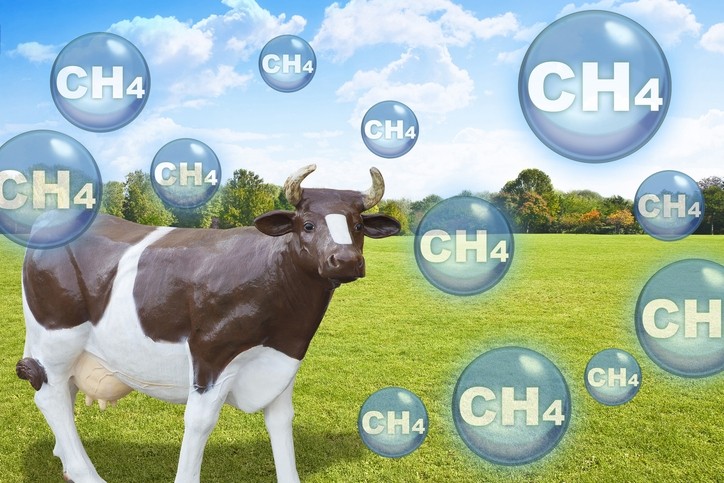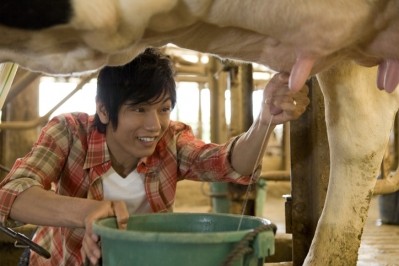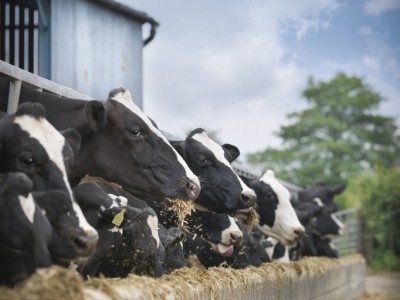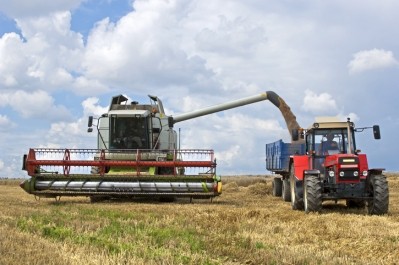AnimalAgTech Innovation Summit Methane Emissions Panel Review
How is the toolkit for methane emissions reduction in dairy and beef cows expanding?

I moderated a panel at the AnimalAgTech Innovation Summit in Amsterdam in October - Reaching Scale with Enteric Emissions Reduction - that included Steve Meller, CEO and co-founder of Nevada, US based CH4 Global, a developer of a red seaweed (Asparagosis) derived feed additive, Sanne Griffoen-Roose, director of sustainable farming, at Dutch dairy cooperative, FrieslandCampina and Michael Lohuis, vice president research and innovation at genetics company, Semex.
Current data and knowledge is ‘good enough’ to support innovation
When asked whether we have solid science now to know what really works in terms of interventions to reduce methane emissions in cows, to quantify the impact, and to know what the pitfalls might be, all speakers agreed that “we have good enough knowledge and good enough data” to move ahead with speed on a multitude of different fronts when it comes to curtailing production of that GHG in ruminants.
Some regulators are proving more pragmatic than others in terms of supporting development in this space, they added.
One of the pitfalls could be waiting for perfection, waiting for certainty; such an approach will slow development, and yet this is a global issue that requires urgent action, stressed the experts.
The scale of the problem
CH4 Global has been focused over the past few years on developing the products and partnerships required to reach its goal of reducing methane emissions on a global scale.
When you look at the scale of the challenge, the numbers are quite staggering.
The 1.5 billion cows on the planet produce more than 150 million tons of methane annually - the largest single source of methane globally. At more than 12 billion tons CO2-e per year, at an average of 100 kg methane per cow, this is a larger GHG output than from the US, the EU, and India combined, noted Meller.
Moreover, the UN cites methane as over 80 times more impactful than CO2 on global warming over the next 20 years.
“That is the size of the problem we have. But it is only a problem if you don’t have a solution.”
What elements are needed for scaling dietary based interventions?
Scaling and market development of methane blockers requires at least three core elements – a product that is sufficiently profitable to be scalable, strong market pull and access to significant capital for expansion, said Meller.
CH4 Global’s first production facility is 12 months out from completion, with 100% of the output already secured by three commercial partners, he told delegates. It will have capacity to feed 30-40,000 cattle per day in 2024. The company cultivates its red seaweed in controlled conditions on land. “We have spent the past four and half years trying to work out the lifecycle of the plant, the processing of it, the growth conditions, the optimization, and the formulations for different market segments.”
The company's recently announced partnership with multinational conglomerate, Lotte International, is another step in the direction of putting its Asparagosis feed additive into the hands of farmers and food producers worldwide, said the CEO. The intent of that alliance is to bring CH4's ruminant enteric methane-reduction technology to South Korea.
Lotte will provide up to 4m cattle with the enteric methane-reducing feed supplement. The climate impact from reduced emissions at that scale would be as much as 10m metric tons, or a conservative estimate of 7m metric tons of CO2-e per year (GWP100), said Meller.
The target launch is 2025, with Lotte leading commercialization and CH4 Global manufacturing and product supply. The partners are currently advancing studies for regulatory approval in that market in consultation with the government.
The tie-up also includes initial supply to the Lotte-owned Australian feedlot, Sandalwood, for up to 7,000 head of cattle, primarily Wagyu Beef.
Sustainability measurement tools and incentives
The more methane blocking innovations out there, the more choices there are, commented Griffoen-Roose.
“The decision is in the hand of the farmer. In terms of challenging or checking if an innovation works, there’s enough data and insights in how we calculate the emissions,” she said.
FrieslandCampina has conducted pilots with the feed additive, Bovaer, the feed products, SilvAir, and Agolin Ruminant.
By 2030, the organization wants to have reduced GHG emissions on member farms by 33% in comparison to 2015. That is quite a challenge, acknowledged Griffoen-Roose, but tools and incentives can encourage farmers to reach that target. “I am optimistic by nature and I believe we can do it.”
The cooperative has developed a sustainability tool that allows farmers to forecast the sustainability impact of mitigation options on individual farms. FrieslandCampina, she explained, also runs focus groups with farmers. “In this way, we can learn from each other.”
In 2015, it introduced a sustainability-based performance bonus for member dairy farmers. Through the ‘sustainable development’ component of Foqus planet, the farmers are encouraged to make their business more sustainable; they receive premiums on the basis of their results in the areas of climate, biodiversity, pasture grazing, animal health and animal welfare.
Developing nation challenge
Reducing enteric methane emissions in cattle is key to reaching net zero goals, remarked Lohuis.
An LCA study that he cited showed enteric methane production is the largest contributor to Canadian agriculture’s carbon footprint, responsible for around 48% of GHG emissions.
If significantly reducing methane emissions in cattle in developed nations is deemed challenging, Lohuis said it is going to be an even more arduous task in developing countries “as there is less feed production, grazing dominates and the roughage is of lower quality so the rumen microbes have to work that much harder to digest those poorer quality [inputs].”
Breeding approaches
However, providing the right genetics to start the supply chain will have a critical impact, along with the use of feed additives, optimized nutritional approaches and better management, he believes.
Semex has been working with industry scientists to find a genetic solution to reduce methane emissions. What the Canadian organization has learnt, he reported, is that almost a quarter of the variation seen between cows in terms of methane emissions production is down to the animal’s genetics.
Measuring enteric methane production, he continued, is difficult and expensive. “But you need to have data to drive a breeding program. So, what do animal breeders do when they don’t have enough data, well they look for a trait that is close, a proxy trait.”
Leading to such a proxy trait was research that started in Belgium, with a team there using mid-infrared (MIR) spectroscopy, involving the shooting of a beam of light through a milk sample, to gain insights into the metabolism of the animal, said Lohuis. And another research team at the University of Guelph discovered that they could predict actual methane production from mid-infrared spectral data. “There is an 0.7 correlation with actual methane, which is quite beneficial if you are looking for a low-cost and readily available trait."
“We were lucky as our milk recording partner, Lactanet, had already started collecting MIR data back in 2013. It had worked well, so in 2018 they ramped it up to most of the milk-recording lines in Canada. Therefore, when we started our research there was already 13 million milk mid-infrared (MIR) spectroscopy records available from 1.6m cows. This was a goldmine. And, of those 1.6m cows, about 10-15% of them already had their DNA collected, so we had genotypes available to go with the MIR data. And, within one year, we were able to publish the world’s first methane efficiency index.”
Selecting for just methane reduction in the breeding program would mean a reduction in production and fat yield, however, and that was not acceptable. “Farmers are paid for milk and fat, so we reconfigured the trait to make it neutral for those production parameters.”
The results of Semex and Lactanet’s work show that substantial reduction in methane emissions is possible with genetic selection. Methane can be reduced by 20-30% by 2050 through selection for low emitters. “One of the advantages of genetics is the change is permanent. It is also accumulative. It is low-cost and simple to do. Frozen semen and frozen embryos travel well so we can have global reach,” Lohuis told us.
Moreover, he said, the genetics of dairy cattle, particularly of Holstein Friesians, are fairly consistent around the world.















